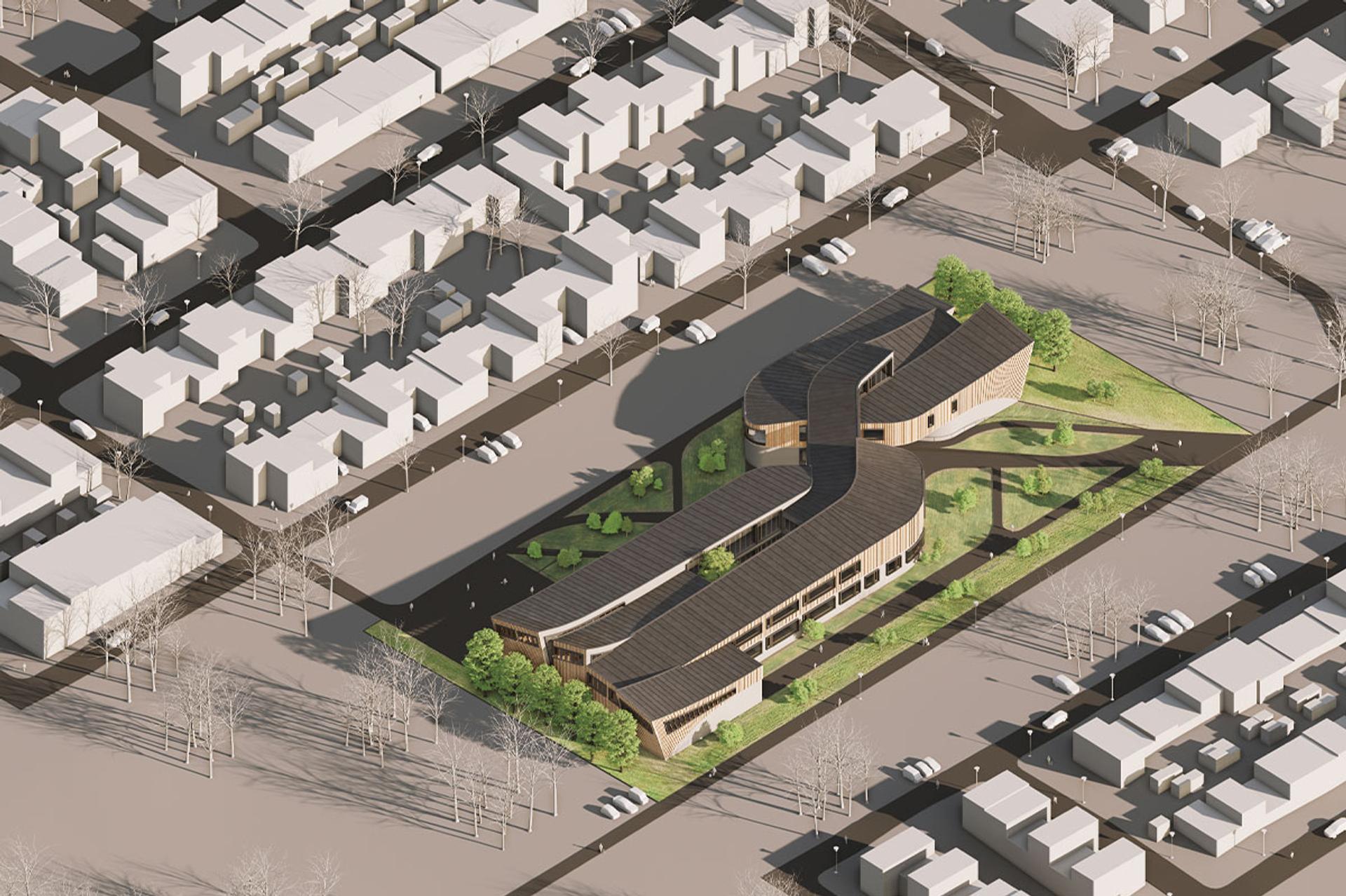> Architectural visualization
With drone technology and design software, it’s easy and affordable to create multiple original 3D aerial renderings for architectural visualizations. In this overview, we’ll discuss how these renderings help gain your client’s confidence, elevate your design, and improve your business.
How are drones used to create aerial renderings?
Drones are becoming increasingly popular in the architecture, engineering, and construction industries. They’re versatile tools making it easier for professionals to inspect project sites, document and model topography, and quickly create convincing architectural aerial renderings.
Typically, to create a 3D aerial view of a building, a camera-equipped drone captures photographs or video of the project site from different angles. The selected images are loaded into photo-editing software alongside an architectural rendering of the building from an aerial perspective. Using your software’s built-in tools, you can align the two images to create a composite 3D bird’s eye view rendering. But that’s just the start. To make your architectural visualization convincing, there are a few more key things to consider.
How do you create the perfect aerial site rendering?
When it comes to crafting seamless 3D aerial site renderings, it’s all about the details. Most critically, the lighting must be right. If it isn’t, the visualization won’t be convincing — or worse, it might be confusing.
Most design software features a geolocation function that can render a building with lighting that matches the specific date and location of the drone footage or Google maps data to recreate on-site conditions. If you’re adding people, vehicles, foliage, or other objects to your rendering, like one of the nearly 3,000 assets from Enscape’s library, ensure that the asset’s perspective and shadows match the original drone imagery. The building’s coloring can also be fine-tuned using photo-editing software to fit the site photo more closely.
When done right, the aerial image is an incredibly useful tool in the design process.











